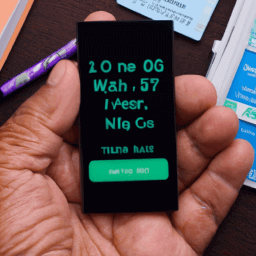What is a normal oxygen saturation reading on Pulse Oximeter
A normal oxygen saturation reading on a pulse oximeter is between 95-100%. This means that the blood is carrying an adequate amount of oxygen to the body's tissues. If the reading is below 95%, it may indicate that the body is not receiving enough oxygen, which could be a sign of respiratory or cardiovascular problems. However, it is important to note that oxygen saturation levels can vary depending on age, activity level, and underlying health conditions. It is best to consult with a healthcare provider if there are concerns about oxygen saturation levels.
What is a normal oxygen saturation reading on Pulse Oximeter?
When it comes to measuring oxygen levels in the blood, a pulse oximeter is a handy device that can help you track your oxygen saturation levels. It is a non-invasive device that clips onto your finger and measures the oxygen saturation level in your blood. The device works by emitting light through your finger and measuring the amount of light that is absorbed by your blood. The reading is then displayed on the device as a percentage.
The normal oxygen saturation level for a healthy individual is between 95% and 100%. However, some people may have a slightly lower oxygen saturation level, which is still considered normal for them. This is because different factors such as age, health conditions, and altitude can affect the oxygen saturation level in the blood.
Factors that affect oxygen saturation levels
There are several factors that can affect the oxygen saturation level in your blood. Some of these factors include:
- Age: As we age, our lungs become less efficient at extracting oxygen from the air we breathe. This can lead to a lower oxygen saturation level in the blood.
- Health conditions: Certain health conditions such as chronic obstructive pulmonary disease (COPD), asthma, and pneumonia can affect the lungs' ability to extract oxygen from the air. This can lead to a lower oxygen saturation level in the blood.
- Altitude: At higher altitudes, the air pressure is lower, which means there is less oxygen in the air. This can lead to a lower oxygen saturation level in the blood.
- Smoking: Smoking can damage the lungs and reduce their ability to extract oxygen from the air. This can lead to a lower oxygen saturation level in the blood.
When to be concerned about oxygen saturation levels
If your oxygen saturation level falls below 90%, it is considered low and may be a cause for concern. This is because a low oxygen saturation level can lead to hypoxemia, which is a condition where the body does not have enough oxygen to function properly. Symptoms of hypoxemia include shortness of breath, confusion, and rapid heart rate.
If you have a health condition that affects your oxygen saturation level, it is important to monitor your levels regularly. If your levels fall below your normal range, you should speak to your doctor.
Conclusion
A pulse oximeter is a useful tool for monitoring your oxygen saturation levels. The normal oxygen saturation level for a healthy individual is between 95% and 100%. However, if you have a health condition or are at a high altitude, your normal range may be slightly lower. If your oxygen saturation level falls below 90%, it is considered low and may be a cause for concern.
| Age | Normal Oxygen Saturation Level |
|---|---|
| Adults | 95% - 100% |
| Elderly | 93% - 100% |
| Children | 95% - 100% |
| Infants | 90% - 100% |
| Pregnant women | 95% - 100% |
| People with lung disease | 90% - 95% |
| People at high altitude | 90% - 95% |
| Smokers | 90% - 95% |
| By www.zelect.in | |
Sharing is caring!
Facebook Twitter Email
Recommended articles for Pulse Oximeter
Pulse Oximeter types and buying guide
-
Pulse oximeter buying guide. How to choose the right oximeter
-
What is a Pulse Oximeter
-
What are the Pulse Oximeter types. Which one is best?
-
What is the normal oxygen saturation on Pulse Oximeter
-
Which brand is best for Pulse Oximeter India
-
Does a Pulse Oximeter measure blood pressure
-
Does a Pulse Oximeter measure heart rate
-
Does Apple watch have Pulse Oximeter
-
How accurate is a Pulse Oximeter
-
What are the 2 readings on a Pulse Oximeter
-
Which finger to use for Pulse Oximeter
-
What does a Pulse Oximeter measure
-
What is a normal oxygen saturation reading on Pulse Oximeter
-
Can Pulse Oximeter detect sleep apnea


